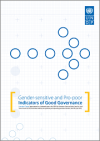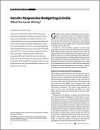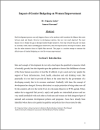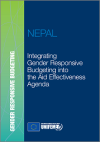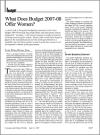FOUND 17
This paper was prepared as a background to the UNDP Oslo Governance Centre and Indian Council for Social Science Research (ICSSR) International workshop on engendering and empowering governance indicators, New Delhi, April 2005.
The article examines the two main strategies adopted by the Government of India for institutionalizing gender responsive budgeting to highlight what has gone wrong and what needs to be fixed in order to achieve better outcomes for women.
This paper is an attempt to measure the effectiveness of Gender Budgeting as a tool for women empowerment. In recent years, Gender Budget Initiatives have emerged as an effective way to bridge gender gaps.
This report presents the findings of a country review carried out in India by Benita Sharma and Aruna Kanchi under the programme "Integrating gender responsive budgeting into the aid effectiveness agenda" launched by UNIFEM and the European Commission (EC) in 2008.The report discusses the use of and
This report presents the findings of a country review carried out in Nepal by Dr. Meena Acharya Sahavagi under the programme"Integrating gender responsive budgeting into the aid effectiveness agenda" launched by UNIFEM and the European Commission (EC) in 2008.
The document provides a gender analysis of the Australian Treasurer's 2006/2007 budgetary changes by examining the gender impacts of newly introduced tax concessions.
This article takes a closer look at the gender budgeting statement in the Union Budget 2007-08 in India and reveals that programmes and allocations remain plagued by mistakes, with several schemes wrongly prioritised as being exclusively for women. Economic and Political Weekly April 21, 2007
